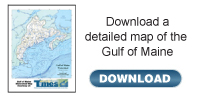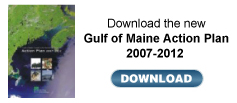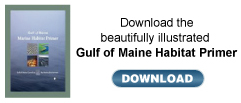Editor's Notes
The many parts of the Gulf of Maine — the power and energy, the fishermen and fish, the visionaries
The Gulf of Maine is an ecosystem beyond compare. In this issue of the Gulf of Maine Times, you will learn of many of the efforts being made around the Gulf to harness the renewable energy sources available in the power of the Gulf’s winds and tides.
There’s also a report on a New Hampshire project that turns dangerous marine debris into energy, ridding the ocean of a hazard to sea life while recycling the trash into a much-needed commodity.
The lobster harvesters who live around the Gulf could have used an alternative energy source this year, as skyrocketing fuel costs affected all the basic fishing needs that must be transported to them -- from bait to the salt that preserves it -- and the necessities that are made from petroleum products, such as totes.
This year’s energy and economic crises were stark reminders that our ecosystem is an integrated one, not just made up of the flora and fauna that live in and around themGulf, but of the residents who populate its perimeter and rely on its resources for their livelihoods.
Two books examined in this issue look at different aspects of areas of the Gulf, but both take into consideration the variety of uses we expect from our coasts and consider both the human impacts and the impacts on humans.
Meanwhile, scientists continue to study and learn more about the various fish stocks that provide both food and commercial value and indicators for the health of the Gulf and other regions. Tagging systems that track the movements of fish are surprising scientists with unexpected information such as the ‘haddock highway.’
Last but far from least, are the people who never cease to work on behalf of the Gulf of Maine, the Gulf of Maine Council’s Visionaries. This year’s array of outstanding winners, like their predecessors, have contributed in their unique ways — as volunteers, mentors, organizers, scientists and stewards.
— Nancy Griffin
|








